Home Security: How a Dog Can Help
In today's world, ensuring the safety of our homes and loved ones is more important than ever. While there are various security systems and gadgets available, one of the most effective and heartwarming solutions is right at our feet: our dogs. This article explores the various ways dogs contribute to home security, detailing their natural instincts, training options, and the emotional benefits they provide to families seeking peace of mind.
Dogs possess inherent protective instincts that make them natural guardians. Their keen senses and loyalty enable them to detect intruders and respond to potential threats, enhancing overall home security. Imagine a scenario where a stranger approaches your home; your dog senses the change in atmosphere, its ears perk up, and it stands alert. This natural behavior not only acts as a deterrent but also gives homeowners an invaluable warning system. Dogs can hear sounds at frequencies that humans cannot, and their acute sense of smell allows them to detect unfamiliar scents long before we do. This combination of senses makes them exceptional watchdogs.
Training is crucial for maximizing a dog's security capabilities. Through obedience training and specific security drills, dogs can be conditioned to alert owners to dangers and deter unwanted visitors. Think of training as building a bridge of communication between you and your furry friend. The more you teach them, the more reliable they become in keeping your home safe. Basic obedience commands are the first step in this journey, laying the groundwork for more advanced security training.
Teaching fundamental commands like sit, stay, and come is essential. These commands help establish control and communication between the owner and the dog. For instance, when your dog knows to stay, it can remain calm and alert in potentially threatening situations, allowing you to assess the circumstances without added chaos. Moreover, these commands foster a bond of trust and respect, making your dog more responsive to your cues during critical moments.
Once your dog has mastered the basics, it’s time to delve into advanced training techniques. These methods can teach dogs to recognize and alert owners to unusual sounds or movements, making them effective watchdogs. Imagine your dog barking at the sound of footsteps on your property, alerting you before anyone even reaches your door. This training not only increases their responsiveness to potential threats but also enhances your peace of mind. A well-trained dog can be your first line of defense, providing both security and companionship.
Proper socialization is essential for a dog’s security training. Exposing them to various environments and people helps prevent fear-based aggression while enhancing their confidence in different situations. A well-socialized dog is less likely to react negatively to new experiences, making them more reliable as guardians. Consider this: a dog that has been socialized properly will greet visitors with curiosity rather than hostility, allowing for safer interactions while still being vigilant.
Different dog breeds exhibit varying levels of protective instincts and trainability. Selecting a breed known for its guarding abilities can significantly impact your home security strategy. For instance, breeds like German Shepherds, Rottweilers, and Doberman Pinschers are often recognized for their protective nature. However, it’s important to remember that every dog is an individual, and training and socialization play critical roles in their behavior. When choosing a breed, consider your lifestyle, living situation, and the amount of time you can dedicate to training and companionship.
Beyond physical security, dogs provide emotional reassurance to homeowners. Their presence can alleviate anxiety and foster a sense of safety, contributing to overall well-being. Imagine coming home after a long day to a wagging tail and eager eyes; it’s hard to feel anything but safe and loved in that moment. Dogs, with their unwavering loyalty and affection, create a comforting environment, making families feel more secure in their homes.
Dogs offer companionship that enhances feelings of safety. Their loyalty and affection create a comforting environment, making families feel more secure in their homes. When you know that your dog is watching over you, it’s like having a furry guardian angel. This bond not only enriches your life but also reinforces the protective role that dogs play in home security.
Having a dog can strengthen family bonds as members work together to train and care for their pet. This shared responsibility fosters teamwork and enhances the overall security atmosphere at home. Picture a family gathering around to teach their dog new tricks or taking walks together; these moments build connections that enhance the sense of safety within the household. It’s not just about having a pet; it’s about creating a family unit that feels secure and supported.
- Do all dogs make good guard dogs? - Not all dogs have the same protective instincts. Breeds known for their guarding abilities tend to perform better in security roles.
- How can I train my dog for security? - Start with basic obedience commands, then gradually introduce advanced alert training techniques.
- What if my dog is friendly with strangers? - Socialization is key. A well-socialized dog can differentiate between a friendly visitor and a potential threat.
- Can a dog really deter burglars? - Yes, the presence of a barking dog can often deter potential intruders from attempting to break in.
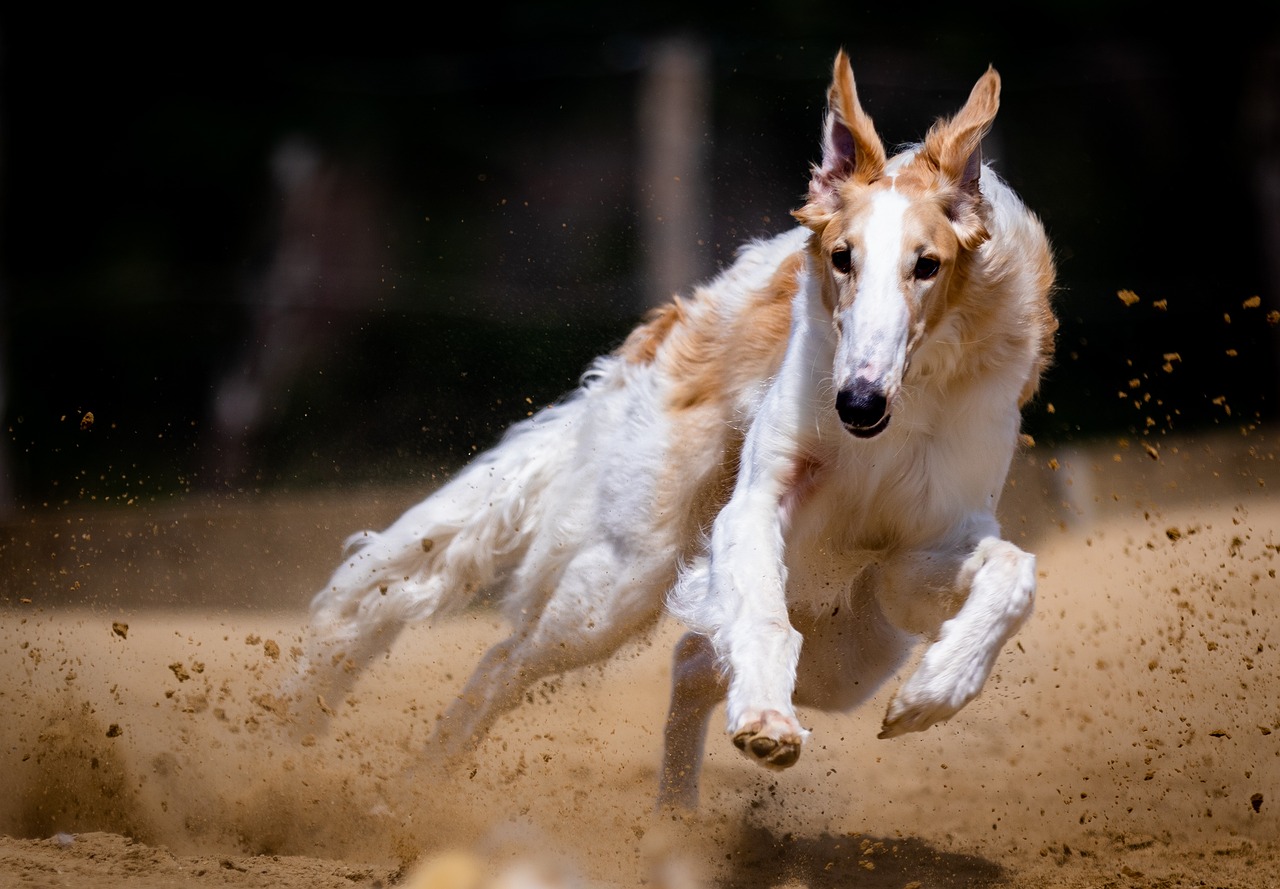
The Protective Instincts of Dogs
Dogs possess inherent protective instincts that make them some of the most reliable guardians you can have for your home. From the moment they enter your life, these four-legged companions are equipped with a natural ability to sense danger and respond to it. Their keen senses, particularly their acute hearing and sense of smell, allow them to detect intruders or unusual activities long before a human would notice. Imagine a scenario where a stranger approaches your home; while you might be oblivious, your dog is already on high alert, ready to defend its territory.
But what exactly drives this protective behavior? It stems from their ancestral lineage. Dogs are descendants of wolves, which are pack animals with a strong instinct to protect their territory and loved ones. This instinct has been passed down through generations, and even the most domesticated breeds retain a strong sense of loyalty and protection towards their family. When you think about it, having a dog is like having a built-in alarm system that comes with the added bonus of affection and companionship.
Moreover, dogs communicate their protective instincts in various ways. They might bark loudly to alert you of a potential threat, or they may position themselves between you and an unfamiliar person or object. This behavior not only serves as a deterrent to potential intruders but also provides you with a sense of security. The sound of a barking dog can be enough to make anyone think twice before attempting to enter your home uninvited.
It's also important to note that not all dogs exhibit the same level of protective instincts. Some breeds are naturally more vigilant and alert than others. For instance, breeds like German Shepherds, Rottweilers, and Doberman Pinschers are renowned for their guarding abilities. On the other hand, smaller breeds might not have the same physical presence, but their alertness can still serve as a warning system. Understanding your dog's breed characteristics can help you leverage their natural instincts effectively.
In addition to their physical abilities, dogs also have an incredible capacity for emotional connection. Their loyalty and affection not only enhance their protective instincts but also create a bond of trust between you and your furry friend. This bond is crucial, as a dog that feels secure and loved is more likely to respond positively when it comes to protecting its home. So, in a way, the emotional and protective aspects of a dog go hand in hand, creating a powerful combination that enhances your home security.
In conclusion, the protective instincts of dogs are a remarkable blend of instinct, training, and emotional connection. By understanding and nurturing these instincts, you can create a safer environment for you and your family. Whether it's through their natural alertness or their unwavering loyalty, dogs are truly invaluable allies in the quest for home security.
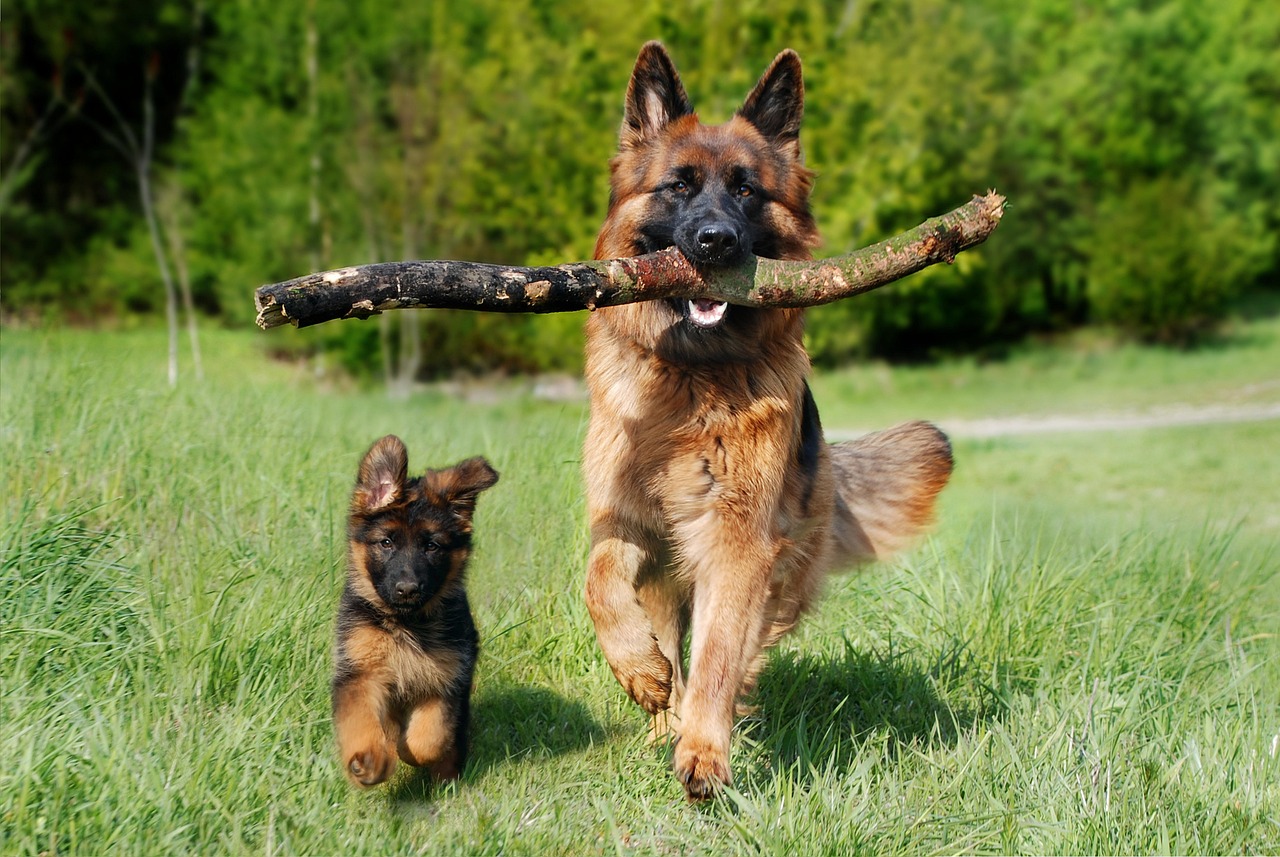
Training Your Dog for Security
When it comes to enhancing your home security, training your dog is a crucial step that shouldn't be overlooked. Just like a well-oiled machine, a well-trained dog can act as a formidable guardian, ready to protect you and your family. Imagine having a furry companion who not only offers love and companionship but also acts as your personal security system! With the right training techniques, you can maximize your dog's natural instincts and transform them into an effective watchdog.
Training a dog for security goes beyond just basic obedience; it involves a combination of commands, socialization, and specialized drills. The foundation of any good training program starts with basic obedience commands. Teaching your dog commands like sit, stay, and come establishes a line of communication between you and your furry friend. These commands are essential because they help you maintain control over your dog in various situations, especially when it comes to security. For instance, if your dog hears a strange noise outside, a simple command can redirect their focus and prevent unnecessary barking or aggression.
Once your dog has mastered the basic commands, you can move on to advanced alert training. This involves teaching your dog to recognize unusual sounds or movements and alert you accordingly. For example, if your dog hears the sound of a door creaking or sees someone lurking around your property, they can be trained to bark or come to you to signal that something might be amiss. This heightened awareness transforms your dog into an effective watchdog, capable of responding to potential threats before they escalate.
However, training doesn't stop there. Socialization plays a pivotal role in your dog's security training. Exposing your dog to various environments, people, and situations helps them build confidence and reduces the likelihood of fear-based aggression. A well-socialized dog is less likely to react negatively to unexpected visitors or noises, making them more effective in their role as a protector. Think of socialization as giving your dog a toolkit; the more tools they have, the better equipped they are to handle different situations.
In addition to training techniques, choosing the right breed can significantly impact your home security strategy. Some breeds are naturally more protective and trainable than others. For instance, breeds like German Shepherds, Rottweilers, and Doberman Pinschers are known for their guarding instincts and responsiveness to training. When selecting a breed, consider your lifestyle and the specific security needs of your home. A dog that fits well into your family dynamic will not only enhance your security but also become a beloved member of your household.
In summary, training your dog for security is a multifaceted process that combines obedience, alert training, and socialization. By investing time and effort into this training, you can create a loyal companion who not only provides emotional support but also keeps your home safe. Remember, a well-trained dog is like having a security system that loves you unconditionally!
- How long does it take to train a dog for security? Training duration varies based on the dog's age, breed, and previous training experience. Generally, it can take several weeks to months to see significant results.
- Can any dog be trained for security? While most dogs can learn basic commands, breeds with strong protective instincts tend to excel in security training.
- What is the best age to start training a dog for security? Starting training as early as possible, typically around 8 weeks old, is ideal to instill good habits and socialization.
- Do I need a professional trainer for security training? While many owners can train their dogs at home, hiring a professional trainer can provide valuable guidance and techniques for effective training.
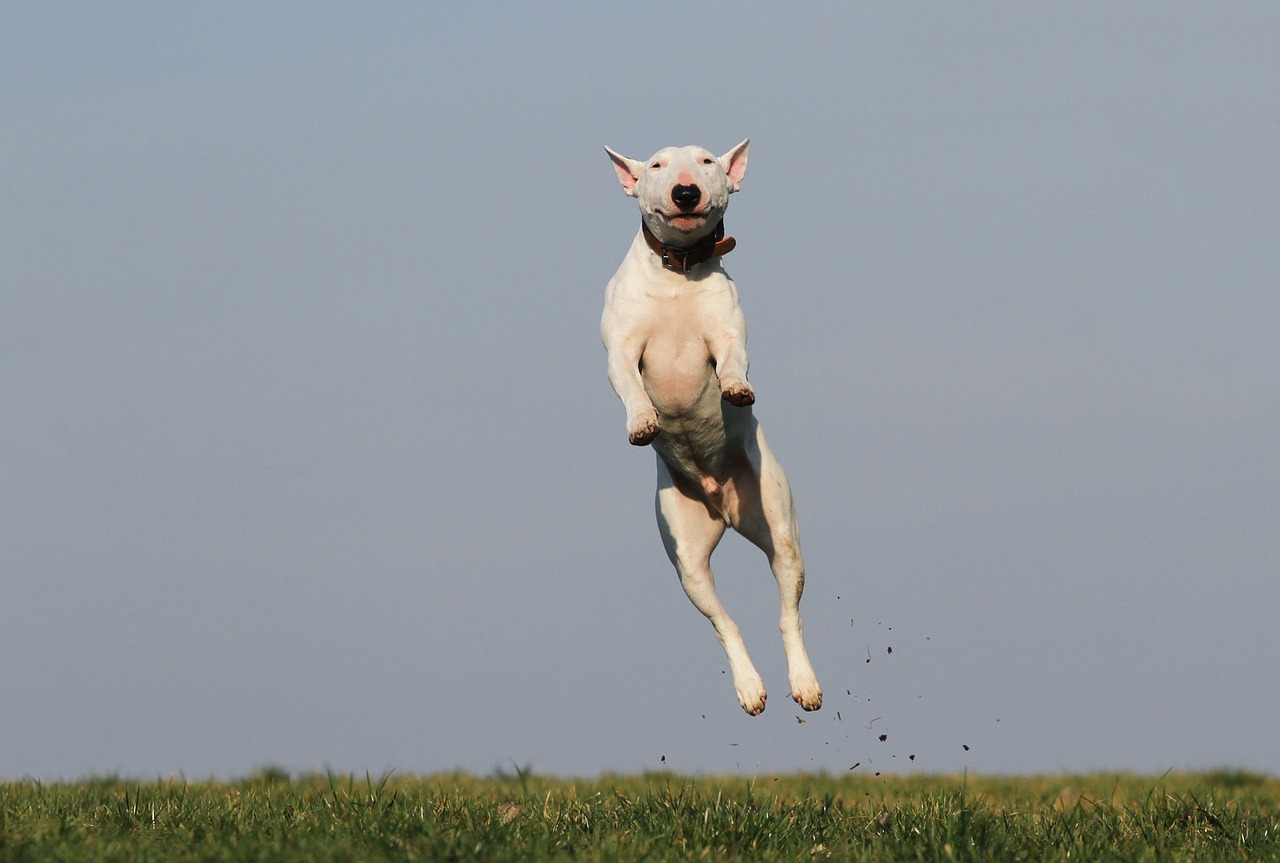
Basic Obedience Commands
Teaching your dog basic obedience commands is not just about instilling discipline; it's about creating a strong foundation for effective communication and mutual understanding. Commands such as sit, stay, and come are essential tools in a dog's training arsenal, enabling them to respond appropriately in various situations. Imagine your dog as a partner in your home security efforts—when they understand these commands, they become more reliable guardians.
The command sit is often the first step in training. It’s simple yet powerful. When your dog learns to sit on command, they not only demonstrate their ability to listen but also gain a sense of calmness and control. This is particularly useful during times when you may need them to remain still, such as when an unfamiliar person approaches your home.
Next up is the command stay. This command can be a game-changer in situations where you want your dog to remain in a designated spot, especially when you’re opening the door or checking the perimeter of your property. Teaching your dog to stay reinforces their discipline and helps prevent them from rushing towards potential threats, allowing you to assess the situation safely.
Finally, the command come is critical for ensuring your dog's safety. Imagine a scenario where your dog spots something outside and decides to run. By mastering the come command, you can call them back, ensuring they don’t wander into danger. This command not only helps in security situations but also strengthens your bond, as they learn to trust your voice and return to you.
Incorporating these commands into your daily routine can be incredibly beneficial. Here are some tips to make training effective:
- Consistency is key: Use the same command words and hand signals every time.
- Positive reinforcement: Reward your dog with treats or praise when they follow commands correctly.
- Short sessions: Keep training sessions brief but frequent to maintain your dog’s attention.
By focusing on these basic obedience commands, you’re not just teaching your dog to follow orders; you’re enhancing their ability to protect your home. The relationship you build through training fosters trust and respect, which are crucial for a dog to feel confident in their role as a protector.
1. How long does it take to train a dog to follow basic commands?
Training duration varies by dog and consistency in training. Generally, it can take a few weeks to a few months of regular practice.
2. Can any breed learn basic obedience commands?
Yes, most dogs can learn basic commands, but some breeds may be more eager to learn than others. Breeds known for their intelligence and trainability tend to pick up commands faster.
3. What should I do if my dog doesn’t respond to commands?
If your dog is struggling, ensure that you’re using positive reinforcement and that training sessions are fun. Patience is crucial; consider consulting a professional trainer if needed.
4. How often should I practice with my dog?
Daily practice, even for just 5-10 minutes, can be very effective. Regular reinforcement helps solidify their understanding of the commands.

sit,
This article explores the various ways dogs contribute to home security, detailing their natural instincts, training options, and the emotional benefits they provide to families seeking peace of mind.
Dogs possess inherent protective instincts that make them natural guardians. Their keen senses and loyalty enable them to detect intruders and respond to potential threats, enhancing overall home security.
Training is crucial for maximizing a dog's security capabilities. Through obedience training and specific security drills, dogs can be conditioned to alert owners to dangers and deter unwanted visitors.
Teaching fundamental commands like sit, stay, and come lays the groundwork for more advanced security training. These commands help establish control and communication between the owner and the dog.
The command sit is one of the first and most essential commands you can teach your dog. It's not just about having your dog follow orders; it’s about creating a foundation of trust and respect. When your dog sits, it’s a sign of obedience and attentiveness, which can be crucial in a security situation. Imagine a scenario where an intruder approaches your home. If your dog is trained to sit on command, they can remain calm and focused, allowing you to assess the situation without chaos.
To teach your dog to sit, follow these simple steps:
- Start with your dog standing in front of you.
- Hold a treat close to their nose to capture their attention.
- Slowly move the treat upwards, allowing their head to follow while their bottom lowers to the ground.
- As soon as their bottom touches the floor, say “sit” and give them the treat.
- Repeat this process until they associate the command with the action.
Consistency is key! Practice this command in various settings to reinforce the behavior. Over time, your dog will learn to sit on command, which can be a valuable tool not just for daily interactions but also for security situations. A dog that sits and stays put can help prevent them from running towards potential dangers, allowing you to maintain control.
When your dog masters the sit command, it offers several benefits that enhance home security:
- **Control**: A sitting dog can be easily managed, reducing the risk of them running off during an emergency.
- **Calmness**: Teaching your dog to sit helps instill a sense of calmness, which is essential during stressful situations.
- **Alertness**: A dog that knows how to sit can be trained to stay alert, allowing them to observe their surroundings without becoming overly excited.
Beyond physical security, dogs provide emotional reassurance to homeowners. Their presence can alleviate anxiety and foster a sense of safety, contributing to overall well-being.
Dogs offer companionship that enhances feelings of safety. Their loyalty and affection create a comforting environment, making families feel more secure in their homes.
Having a dog can strengthen family bonds as members work together to train and care for their pet. This shared responsibility fosters teamwork and enhances the overall security atmosphere at home.
Yes, while some breeds are naturally more protective, any dog can be trained to enhance home security with the right techniques and commitment.
Training a dog to sit can take anywhere from a few days to a few weeks, depending on the dog’s age, breed, and previous training experience.
Breeds such as German Shepherds, Rottweilers, and Doberman Pinschers are often recommended for their protective instincts and trainability.
While professional trainers can be beneficial, many owners successfully train their dogs using online resources and consistent practice.
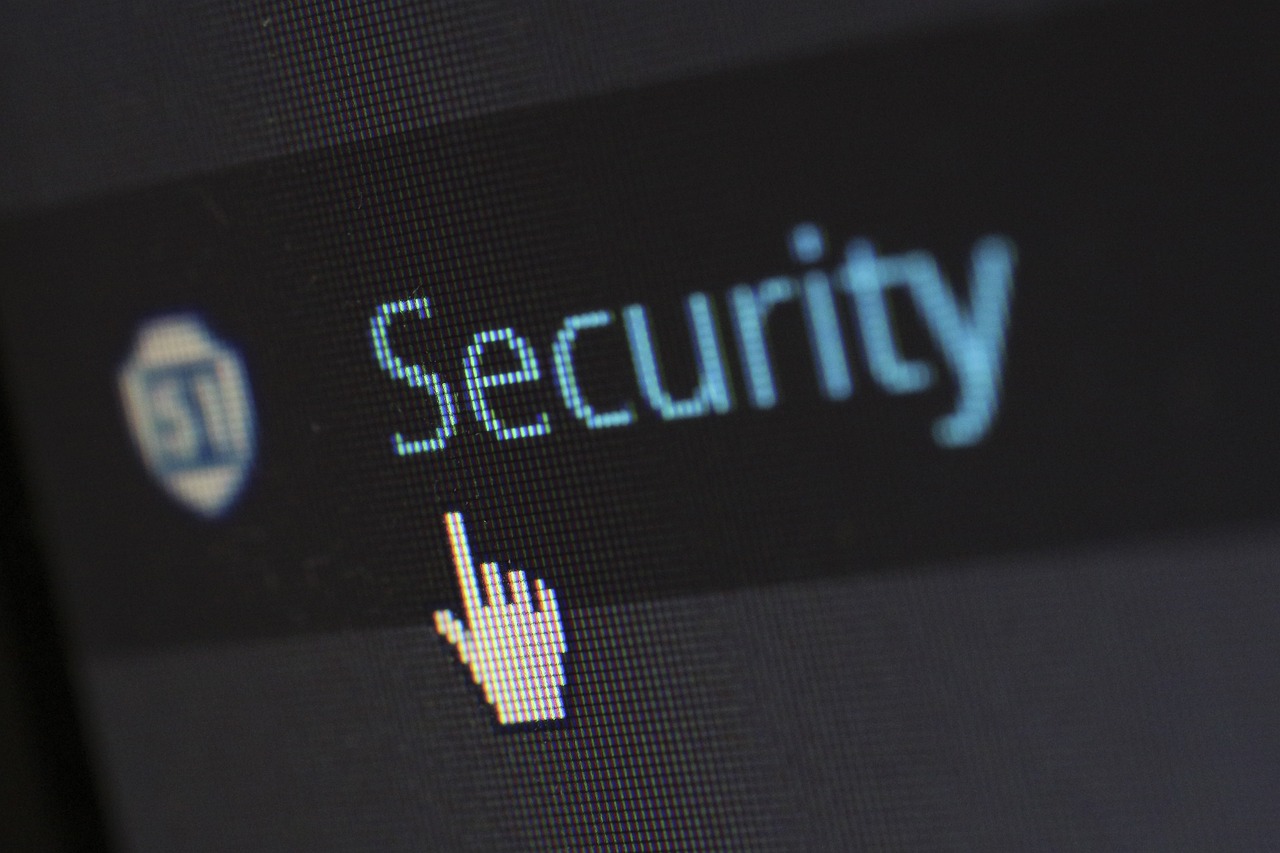
This article explores the various ways dogs contribute to home security, detailing their natural instincts, training options, and the emotional benefits they provide to families seeking peace of mind.
Dogs possess inherent protective instincts that make them natural guardians. Their keen senses and loyalty enable them to detect intruders and respond to potential threats, enhancing overall home security. Imagine a scenario where you’re peacefully watching a movie, and suddenly your furry friend perks up, ears alert, tail poised. That’s not just a cute quirk; it’s their instinct kicking in! Dogs can hear sounds far beyond the human range, allowing them to sense danger long before we do. This natural alertness can be a game changer in ensuring your home remains a safe haven.
Training is crucial for maximizing a dog's security capabilities. Through obedience training and specific security drills, dogs can be conditioned to alert owners to dangers and deter unwanted visitors. Think of training as building a bridge of communication between you and your dog. The stronger that bridge, the more effectively your dog can act as your protector. Not only does training enhance their instincts, but it also builds their confidence, making them more reliable guardians.
Teaching fundamental commands like sit, stay, and come lays the groundwork for more advanced security training. These commands help establish control and communication between the owner and the dog. For instance, when your dog understands the command to stay, you can confidently secure your home knowing they won’t rush out the door when someone knocks. This basic training fosters a sense of discipline that is essential for any security role.
Advanced training techniques can teach dogs to recognize and alert owners to unusual sounds or movements, making them effective watchdogs. This training increases their responsiveness to potential threats. Imagine your dog barking at the slightest unfamiliar noise; that’s not just barking—it's their way of saying, “Hey, something’s off!” The more you invest in their training, the sharper their instincts become.
Proper socialization is essential for a dog’s security training. Exposing them to various environments and people helps prevent fear-based aggression while enhancing their confidence in different situations. A well-socialized dog is less likely to react negatively in stressful situations, allowing them to focus on their protective role rather than being overwhelmed by fear. Think of socialization as giving your dog the tools to navigate the world confidently, which ultimately makes them a better security companion.
Different dog breeds exhibit varying levels of protective instincts and trainability. Selecting a breed known for its guarding abilities can significantly impact your home security strategy. For example, breeds like German Shepherds, Rottweilers, and Doberman Pinschers are often recognized for their protective nature. However, it's essential to consider the individual personality of the dog as well. Not every dog of a particular breed will possess the same level of instinct or trainability. Researching and understanding the characteristics of different breeds can help you make an informed decision that aligns with your security needs.
Beyond physical security, dogs provide emotional reassurance to homeowners. Their presence can alleviate anxiety and foster a sense of safety, contributing to overall well-being. Imagine coming home after a long day, and your furry friend greets you with a wagging tail and excited barks. That simple act can melt away the stress of the day, making you feel more at ease. Dogs have a unique ability to sense our emotions and can provide comfort in times of need.
Dogs offer companionship that enhances feelings of safety. Their loyalty and affection create a comforting environment, making families feel more secure in their homes. When you know someone is always watching over you, even if it’s just a dog curled up at your feet, it’s hard not to feel a little safer. This bond goes beyond mere protection—it’s about creating a nurturing atmosphere where everyone feels valued and secure.
Having a dog can strengthen family bonds as members work together to train and care for their pet. This shared responsibility fosters teamwork and enhances the overall security atmosphere at home. When everyone pitches in, whether it’s feeding, walking, or training, it creates a sense of unity. Plus, it teaches valuable lessons about responsibility and empathy, making the home not just a secure place, but a loving one as well.
- Can any dog be trained for home security? While most dogs can be trained to some extent, certain breeds are more naturally inclined toward protective behaviors.
- How long does it take to train a dog for security? Training duration varies by dog and training methods used, but consistent practice can yield results in a few months.
- Are guard dogs safe around children? Yes, with proper training and socialization, many guard dogs can be excellent companions for children.
- Do I need a professional trainer? While you can train your dog at home, a professional trainer can provide expertise, especially for advanced techniques.
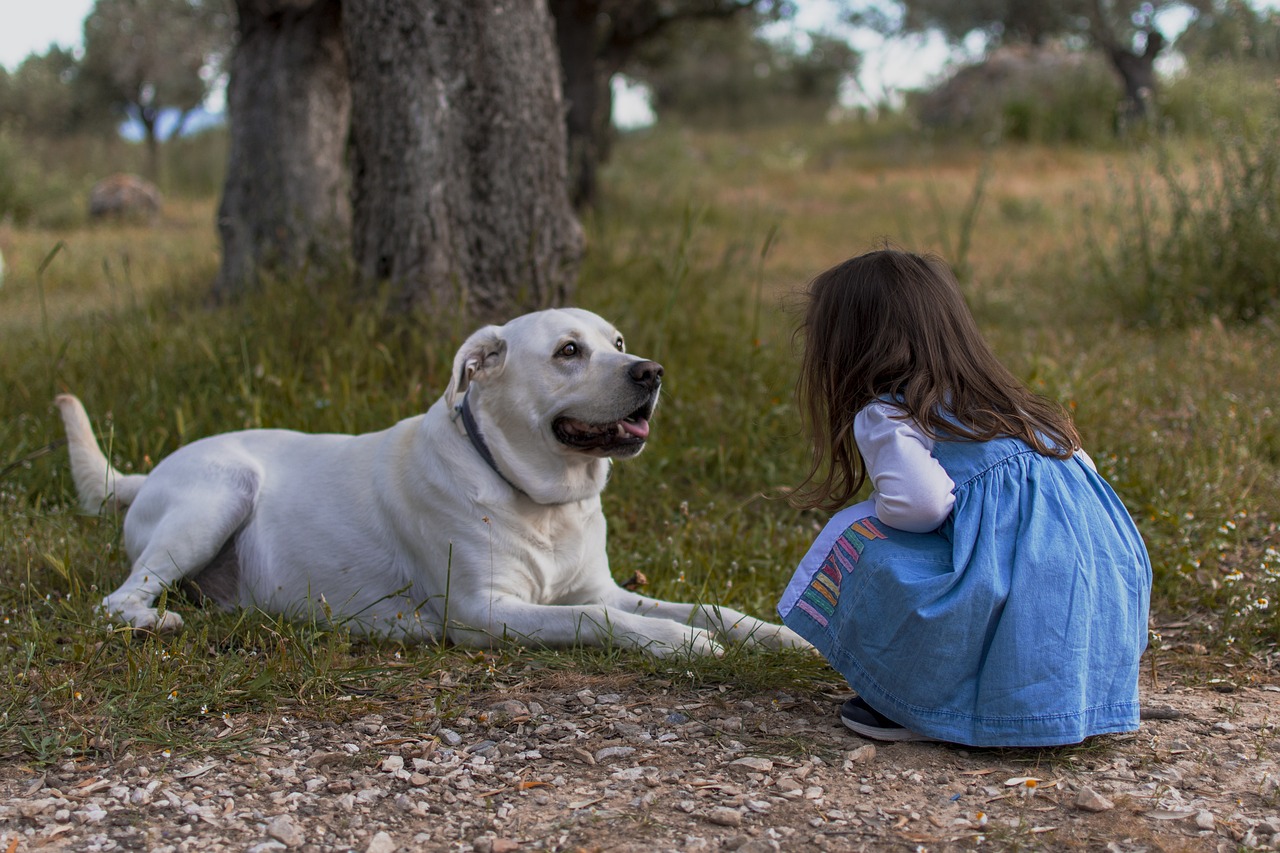
stay,
This article explores the various ways dogs contribute to home security, detailing their natural instincts, training options, and the emotional benefits they provide to families seeking peace of mind.
Dogs possess inherent protective instincts that make them natural guardians. Their keen senses and loyalty enable them to detect intruders and respond to potential threats, enhancing overall home security.
Training is crucial for maximizing a dog's security capabilities. Through obedience training and specific security drills, dogs can be conditioned to alert owners to dangers and deter unwanted visitors.
Teaching fundamental commands like sit, stay, and come lays the groundwork for more advanced security training. These commands help establish control and communication between the owner and the dog.
Advanced training techniques can teach dogs to recognize and alert owners to unusual sounds or movements, making them effective watchdogs. This training increases their responsiveness to potential threats.
Proper socialization is essential for a dog’s security training. Exposing them to various environments and people helps prevent fear-based aggression while enhancing their confidence in different situations.
Different dog breeds exhibit varying levels of protective instincts and trainability. Selecting a breed known for its guarding abilities can significantly impact your home security strategy.
Beyond physical security, dogs provide emotional reassurance to homeowners. Their presence can alleviate anxiety and foster a sense of safety, contributing to overall well-being.
Dogs offer companionship that enhances feelings of safety. Their loyalty and affection create a comforting environment, making families feel more secure in their homes.
Having a dog can strengthen family bonds as members work together to train and care for their pet. This shared responsibility fosters teamwork and enhances the overall security atmosphere at home.
The command stay is one of the most important and versatile commands you can teach your dog. It is not just about keeping your dog in one place; it’s about instilling a sense of discipline and control. When a dog learns to stay, it provides a layer of security, especially in situations where you need them to remain calm and stationary. Imagine a scenario where an unexpected visitor arrives at your home. With a well-trained dog that understands the stay command, you can prevent them from rushing to the door, which could potentially lead to a chaotic situation.
To effectively teach your dog to stay, begin in a quiet environment with minimal distractions. Use treats as positive reinforcement to encourage your dog. Start by commanding them to sit, then gradually introduce the stay command. Move a few steps back and wait for your dog to remain in place. If they stay, reward them with a treat and praise. If they move, gently guide them back to the original position and try again. This process may take time, but the results will be worth it.
Consistency is key when training your dog. Practice the stay command regularly, gradually increasing the distance and duration. As your dog becomes more proficient, you can introduce distractions to further challenge their ability. This command not only enhances security by keeping your dog in a controlled position but also reinforces their overall obedience and strengthens the bond between you and your furry friend.
- How long does it take to train a dog to stay? The time varies by dog, but with consistent practice, many dogs can learn the command in a few weeks.
- Can any breed learn the stay command? Yes, most breeds can learn this command, but some may require more patience and training than others.
- What should I do if my dog doesn’t stay? Be patient and consistent. Use positive reinforcement and start with shorter distances before gradually increasing them.
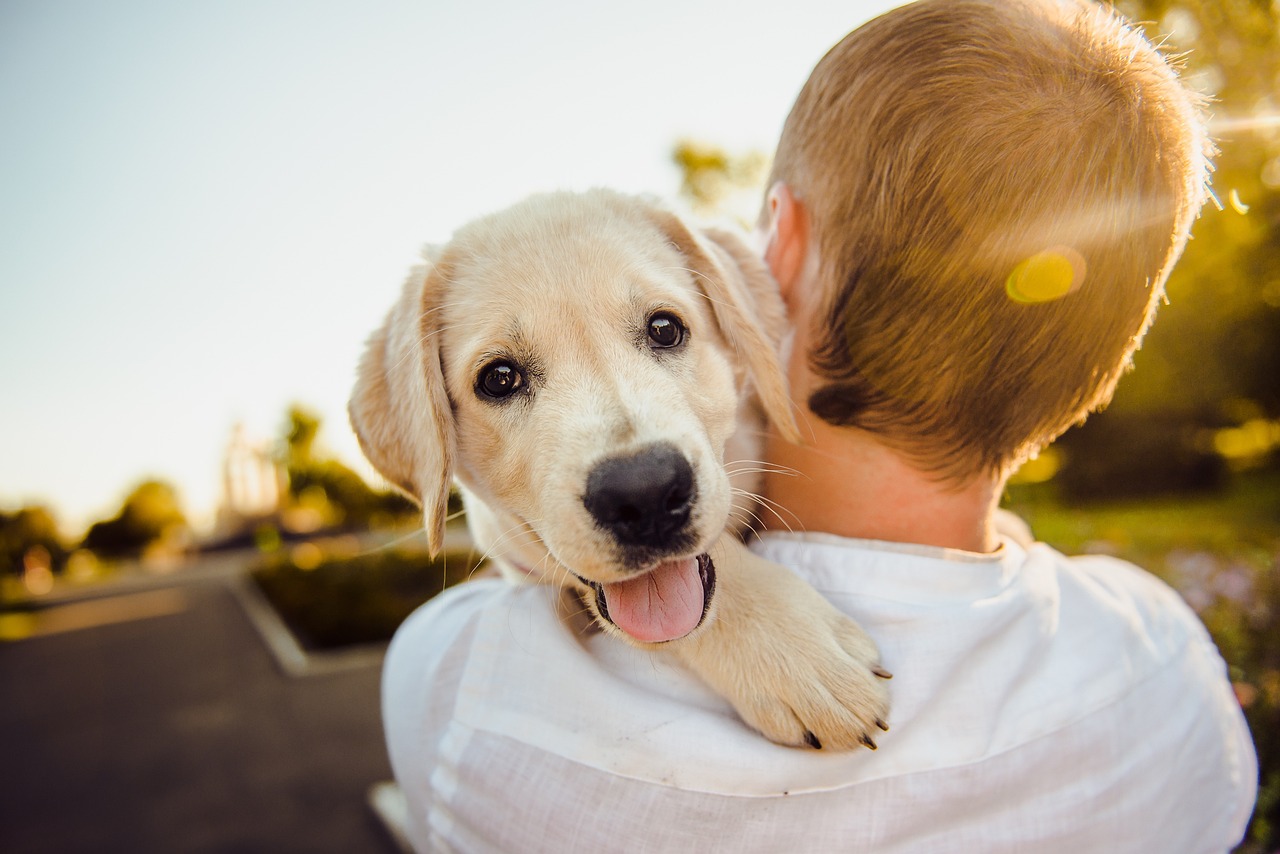
and
This article explores the various ways dogs contribute to home security, detailing their natural instincts, training options, and the emotional benefits they provide to families seeking peace of mind.
Dogs possess inherent protective instincts that make them natural guardians. Their keen senses and loyalty enable them to detect intruders and respond to potential threats, enhancing overall home security.
Training is crucial for maximizing a dog's security capabilities. Through obedience training and specific security drills, dogs can be conditioned to alert owners to dangers and deter unwanted visitors.
Teaching fundamental commands like sit, stay, and come lays the groundwork for more advanced security training. These commands help establish control and communication between the owner and the dog.
Advanced training techniques can teach dogs to recognize and alert owners to unusual sounds or movements, making them effective watchdogs. This training increases their responsiveness to potential threats.
Proper socialization is essential for a dog’s security training. Exposing them to various environments and people helps prevent fear-based aggression while enhancing their confidence in different situations.
Different dog breeds exhibit varying levels of protective instincts and trainability. Selecting a breed known for its guarding abilities can significantly impact your home security strategy.
Beyond physical security, dogs provide emotional reassurance to homeowners. Their presence can alleviate anxiety and foster a sense of safety, contributing to overall well-being.
Dogs offer companionship that enhances feelings of safety. Their loyalty and affection create a comforting environment, making families feel more secure in their homes.
Having a dog can strengthen family bonds as members work together to train and care for their pet. This shared responsibility fosters teamwork and enhances the overall security atmosphere at home.
Here are some questions that many people have regarding the role of dogs in home security:
- What breeds are best for home security? Certain breeds like German Shepherds, Rottweilers, and Doberman Pinschers are known for their protective instincts and trainability.
- Can any dog be trained for security? While many dogs can be trained to some extent, some breeds are naturally more inclined towards protective behaviors.
- How can I ensure my dog is safe while protecting my home? Proper training and socialization are key. Additionally, ensure that your dog is well cared for and not overworked.
- What are the emotional benefits of having a dog? Dogs provide companionship, reduce stress, and create a sense of safety and security for families.

come
This article explores the various ways dogs contribute to home security, detailing their natural instincts, training options, and the emotional benefits they provide to families seeking peace of mind.
Dogs possess inherent protective instincts that make them natural guardians. Their keen senses and loyalty enable them to detect intruders and respond to potential threats, enhancing overall home security.
Training is crucial for maximizing a dog's security capabilities. Through obedience training and specific security drills, dogs can be conditioned to alert owners to dangers and deter unwanted visitors.
Teaching fundamental commands like sit, stay, and lays the groundwork for more advanced security training. These commands help establish control and communication between the owner and the dog.
Advanced training techniques can teach dogs to recognize and alert owners to unusual sounds or movements, making them effective watchdogs. This training increases their responsiveness to potential threats.
Proper socialization is essential for a dog’s security training. Exposing them to various environments and people helps prevent fear-based aggression while enhancing their confidence in different situations.
Different dog breeds exhibit varying levels of protective instincts and trainability. Selecting a breed known for its guarding abilities can significantly impact your home security strategy.
Beyond physical security, dogs provide emotional reassurance to homeowners. Their presence can alleviate anxiety and foster a sense of safety, contributing to overall well-being.
Dogs offer companionship that enhances feelings of safety. Their loyalty and affection create a comforting environment, making families feel more secure in their homes.
Having a dog can strengthen family bonds as members work together to train and care for their pet. This shared responsibility fosters teamwork and enhances the overall security atmosphere at home.
The command is one of the most vital commands you can teach your dog, especially when it comes to security training. Imagine a scenario where your dog is outside, and you spot an unfamiliar person approaching your property. With a reliable command, you can call your dog back to your side, keeping them safe and under control. This command is not just about obedience; it's about ensuring your dog's safety and your peace of mind.
Training your dog to respond to the command requires patience and consistency. Start in a distraction-free environment, using a happy tone and positive reinforcement, such as treats or praise. Gradually increase the level of distractions as your dog becomes more reliable. This not only reinforces their training but also strengthens the bond between you and your furry friend.
In addition to enhancing security, the command can be a lifesaver in emergency situations. For instance, if your dog wanders too close to a busy street or encounters a potentially dangerous animal, a strong command can prevent accidents and ensure their safety. It’s like having a safety net that you can rely on in critical moments.
Moreover, teaching your dog to can be an enjoyable experience for both of you. It’s a chance to engage in play and build trust. You can incorporate games like hide-and-seek, where you hide and call your dog to find you. This not only makes training fun but also reinforces their response to the command in a playful context.
- What are the best breeds for home security? Some of the best breeds for home security include German Shepherds, Rottweilers, and Doberman Pinschers, known for their protective instincts and loyalty.
- How long does it take to train a dog to respond to commands? Training duration varies by dog and command complexity, but consistency and positive reinforcement can yield results in a few weeks.
- Can any dog be trained for security purposes? While many dogs can be trained for basic security, breeds with strong protective instincts may be more effective.
- What should I do if my dog shows aggression towards strangers? Consult a professional trainer to address aggressive behavior and ensure proper socialization.
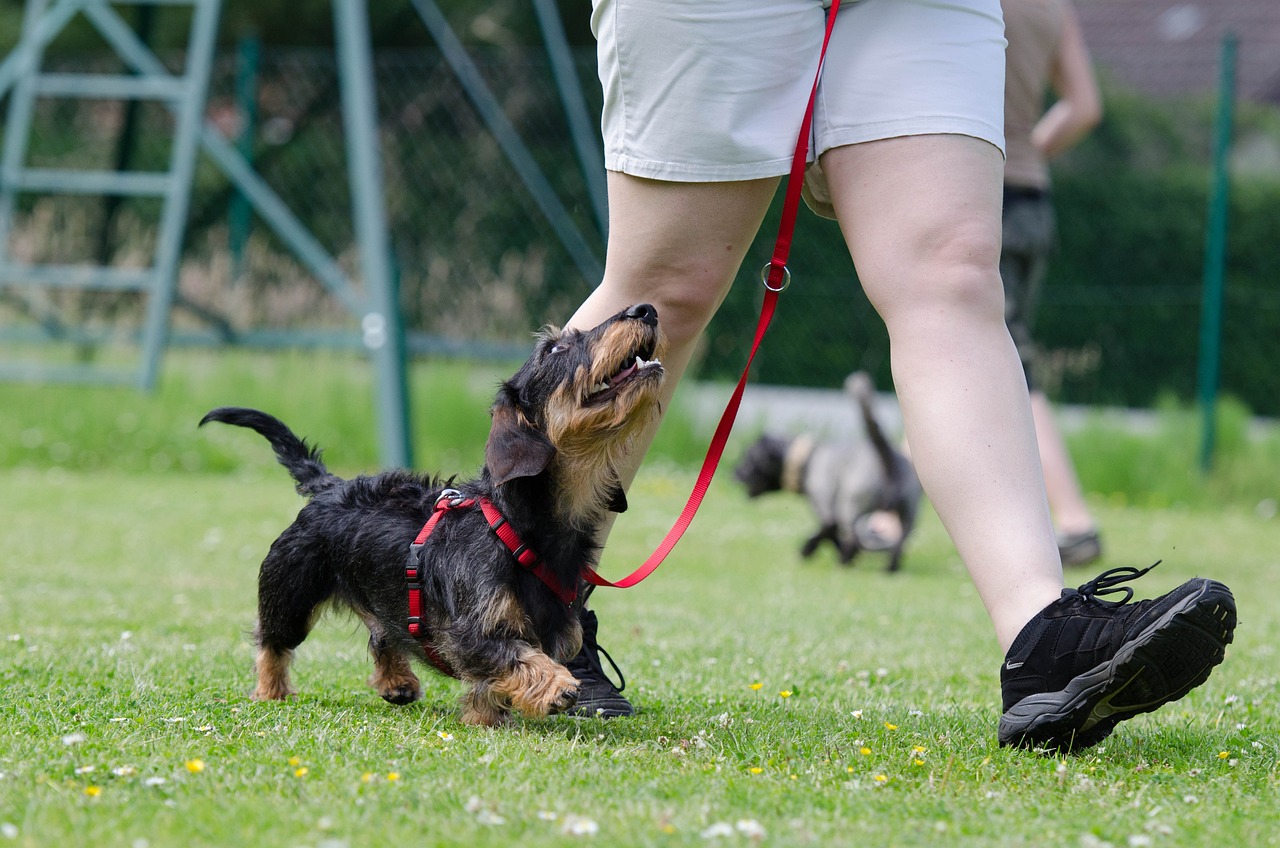
lays the groundwork for more advanced security training. These commands help establish control and communication between the owner and the dog.
This article explores the various ways dogs contribute to home security, detailing their natural instincts, training options, and the emotional benefits they provide to families seeking peace of mind.
Dogs possess inherent protective instincts that make them natural guardians. Their keen senses and loyalty enable them to detect intruders and respond to potential threats, enhancing overall home security.
Training is crucial for maximizing a dog's security capabilities. Through obedience training and specific security drills, dogs can be conditioned to alert owners to dangers and deter unwanted visitors.
Teaching fundamental commands like sit, stay, and come lays the groundwork for more advanced security training. These commands help establish control and communication between the owner and the dog. When a dog understands basic commands, it becomes easier to convey expectations and reinforce desired behaviors. This foundational training not only enhances the dog's responsiveness but also builds a strong bond of trust between the owner and the pet. Imagine your dog sitting calmly while you open the door to a visitor; this level of control can make a significant difference in how your dog perceives the situation and reacts. Furthermore, these commands serve as the building blocks for more complex behaviors that can be critical in security scenarios.
Advanced training techniques can teach dogs to recognize and alert owners to unusual sounds or movements, making them effective watchdogs. This training increases their responsiveness to potential threats.
Proper socialization is essential for a dog’s security training. Exposing them to various environments and people helps prevent fear-based aggression while enhancing their confidence in different situations.
Different dog breeds exhibit varying levels of protective instincts and trainability. Selecting a breed known for its guarding abilities can significantly impact your home security strategy.
Beyond physical security, dogs provide emotional reassurance to homeowners. Their presence can alleviate anxiety and foster a sense of safety, contributing to overall well-being.
Dogs offer companionship that enhances feelings of safety. Their loyalty and affection create a comforting environment, making families feel more secure in their homes.
Having a dog can strengthen family bonds as members work together to train and care for their pet. This shared responsibility fosters teamwork and enhances the overall security atmosphere at home.
- How can I ensure my dog is well-trained for security?
Consistent training, socialization, and positive reinforcement are key. Consider enrolling in professional training classes for best results. - Are certain breeds better for home security?
Yes, breeds like German Shepherds, Rottweilers, and Doberman Pinschers are often recommended for their natural guarding instincts. - How does having a dog improve family security?
A dog can act as a deterrent to intruders and provide emotional support, enhancing the overall sense of safety in the household.
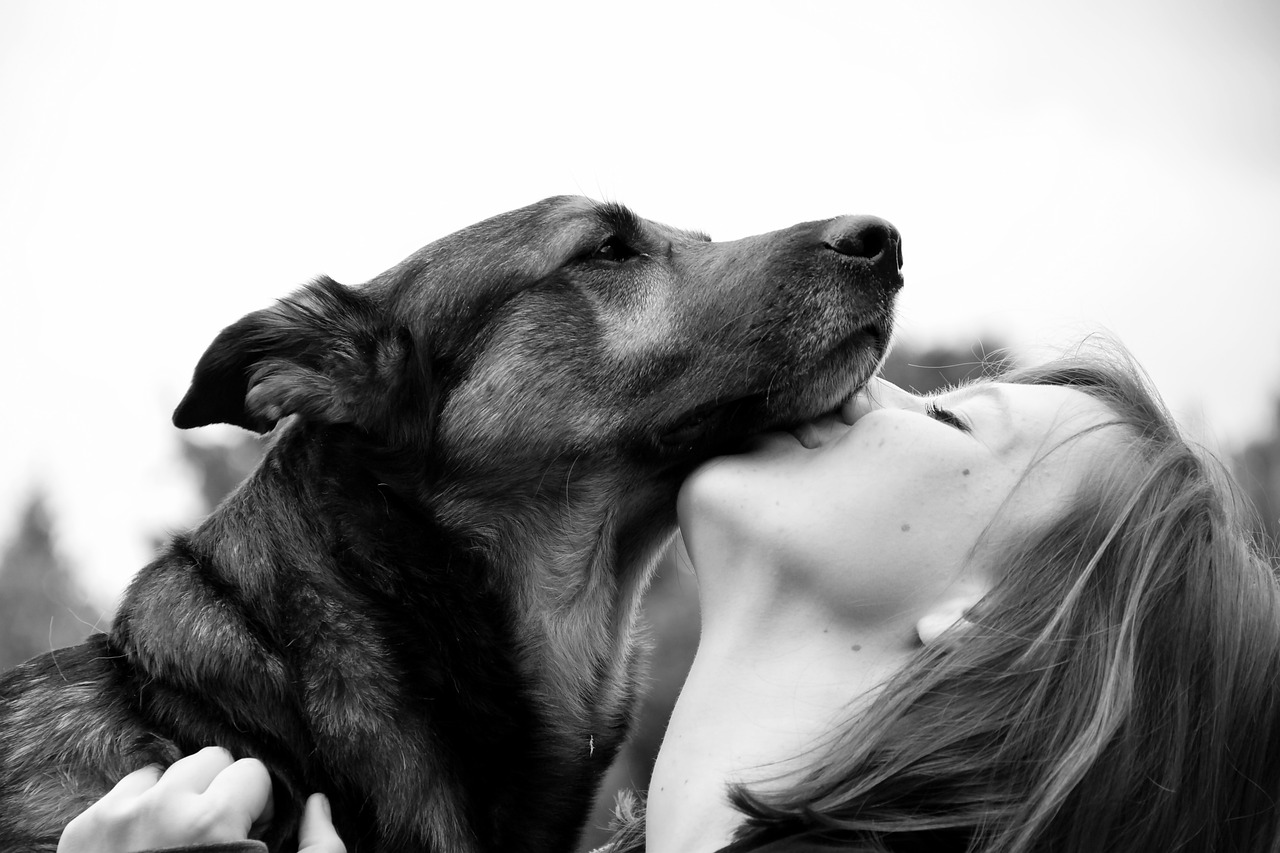
Advanced Alert Training
When it comes to enhancing your dog's role in home security, is a game changer. This specialized training goes beyond basic obedience, teaching your furry friend to recognize and respond to unusual sounds or movements that could indicate a threat. Imagine your dog, not just lounging around, but actively on the lookout for anything out of the ordinary. It's like having a furry alarm system that is always on duty!
To start with, advanced alert training involves conditioning your dog to associate specific sounds or situations with a need for alertness. For instance, you might use a doorbell or a knocking sound during training sessions. Each time your dog hears the sound, you can reward them for barking or showing alert behavior. This positive reinforcement helps them understand that their response is not only acceptable but also appreciated. Over time, your dog learns to differentiate between normal household noises and those that require attention.
One effective method is to create scenarios that mimic real-life situations. For example, you could invite friends over and have them act as potential intruders by knocking on the door or making unexpected noises. This not only tests your dog's alertness but also reinforces their training in a controlled environment. The more exposure they have to various sounds and situations, the better they become at discerning what requires a response.
It's essential to keep training sessions short and engaging. Dogs have a limited attention span, so breaking down the training into manageable segments can yield better results. Consistency is key; regular practice will help reinforce the behavior you want to see. Remember, the goal is to create a reliable alert system that can distinguish between harmless sounds and genuine threats.
Moreover, it's crucial to consider your dog's temperament and personality when implementing advanced alert training. Some breeds may naturally be more alert and responsive, while others may require more encouragement and practice. For instance, breeds like German Shepherds and Rottweilers are known for their protective instincts and may take to this training more readily than others. Understanding your dog's unique characteristics will help you tailor the training approach to suit their needs.
In summary, advanced alert training can significantly enhance your dog's ability to contribute to home security. By teaching them to recognize and respond to potential threats, you not only increase your safety but also strengthen the bond between you and your pet. It's a win-win situation that transforms your dog into a vigilant guardian of your home.
- How long does advanced alert training take? The duration varies depending on the dog's age, breed, and prior training experience. Generally, consistent training over a few weeks can show significant results.
- Can any dog be trained for advanced alert behavior? While most dogs can be trained, some breeds are more predisposed to alertness and guarding than others. Consult with a professional trainer for the best approach.
- Is advanced alert training safe for my dog? Yes, as long as it's conducted in a positive and controlled environment. Avoid overwhelming your dog with too much stimulation at once.
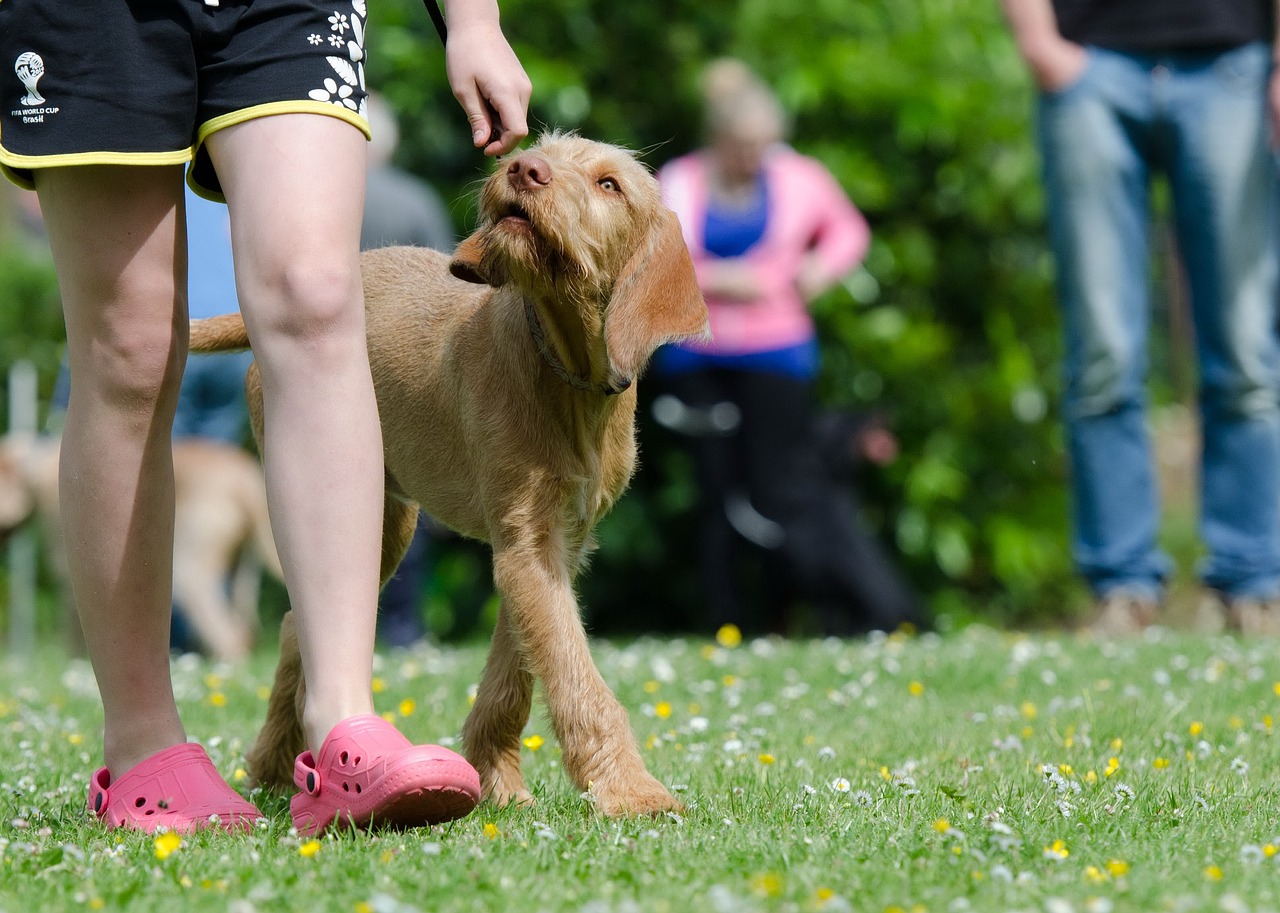
Socialization and Behavior
When it comes to training your dog for security, one of the most critical aspects is socialization. Think of socialization as a way of broadening your dog's horizons. Just like people, dogs need to experience different environments, sounds, and people to develop a well-rounded personality. A dog that is well-socialized is less likely to react fearfully or aggressively to new situations, which can be crucial for maintaining a peaceful home environment.
Imagine a scenario where your dog encounters a delivery person for the first time. A well-socialized dog will greet them with curiosity, while a poorly socialized dog might bark aggressively, thinking they are a threat. This is why exposing your dog to various situations is essential in their training. The more experiences they have, the more confident they become, and the better they are at handling unexpected situations.
Socialization should ideally start when your dog is a puppy, as this is the most impressionable stage of their life. However, it’s never too late to start! Here are some effective strategies to enhance your dog’s socialization:
- Introduce New People: Regularly invite friends and family over to meet your dog. This helps them learn to accept new faces in their territory.
- Visit Different Environments: Take your dog to parks, pet stores, or even busy streets. The exposure to various sounds and sights helps them adapt.
- Enroll in Training Classes: Group classes can provide a controlled environment where your dog can meet other dogs and people, reinforcing positive interactions.
In addition to socialization, understanding your dog’s behavior is crucial. Dogs communicate through body language, and being able to interpret their signals can help you manage their reactions to different stimuli. For example, a dog that is wagging its tail might seem friendly, but if the tail is held high and stiff, it could indicate agitation. Learning these cues can help you prevent situations that might lead to fear or aggression.
Moreover, consistent training reinforces good behavior. Dogs thrive on routine and clear expectations. A well-behaved dog is not only a joy to have around but also contributes significantly to home security. When they feel secure and confident, they are more likely to alert you to genuine threats rather than reacting out of fear.
In summary, socialization and understanding your dog's behavior are fundamental components of effective security training. By investing time in these areas, you not only enhance your dog's ability to protect your home but also foster a loving and secure environment for your family.
Q1: How early should I start socializing my dog?
A1: It's best to start socializing your dog as early as possible, ideally between 3 and 14 weeks of age. However, older dogs can still benefit from socialization.
Q2: What are some signs that my dog is not well-socialized?
A2: Signs include excessive barking, growling, hiding, or aggressive behavior towards unfamiliar people or animals.
Q3: Can I socialize my dog on my own?
A3: Yes, you can socialize your dog on your own by exposing them to new experiences, but enrolling in a training class can provide additional support and guidance.
Q4: How can I tell if my dog is enjoying socialization?
A4: A happy dog will have a relaxed body posture, wagging tail, and will engage positively with people and other dogs.
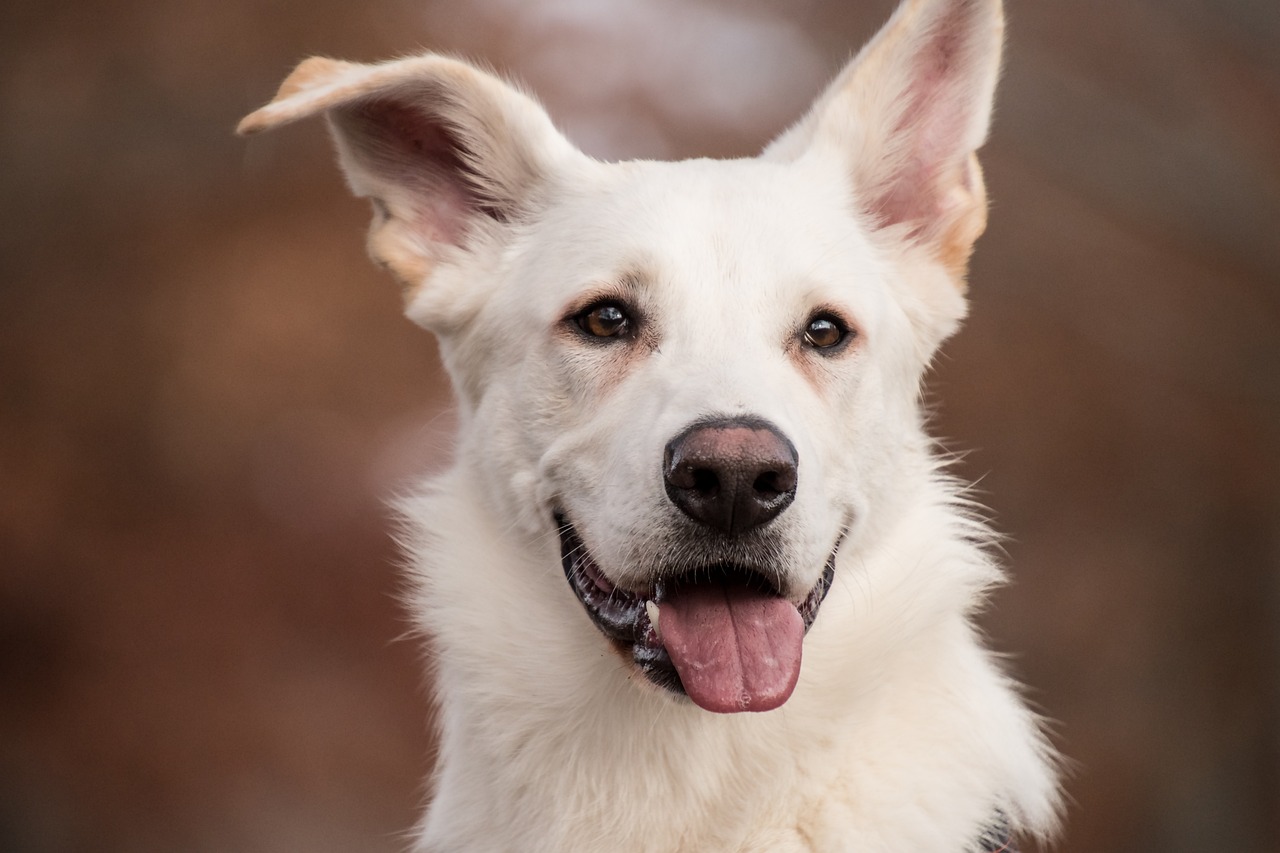
Choosing the Right Breed
When it comes to enhancing your home security with a canine companion, is crucial. Not all dogs are created equal in terms of their protective instincts and trainability. Some breeds are inherently more vigilant, while others may be more laid-back. Understanding the characteristics of various breeds can help you select a dog that not only fits your lifestyle but also serves as an effective guardian for your home.
For instance, breeds like the German Shepherd, Rottweiler, and Doberman Pinscher are renowned for their protective nature and intelligence. These dogs often excel in security roles due to their strong instincts and ability to be trained for specific tasks. On the other hand, smaller breeds like the Chihuahua or Pomeranian may not have the physical presence to deter intruders, but they can still be excellent alert dogs thanks to their keen senses and loud barks.
When selecting a breed, consider the following factors:
- Size: Larger breeds tend to be more intimidating, which can deter potential intruders. However, a smaller dog can still be a great alarm system.
- Temperament: Look for breeds known for their loyalty and protective instincts. A dog that is naturally wary of strangers can be a great asset.
- Trainability: Some breeds are easier to train than others. If you plan to teach your dog specific security commands, choose a breed that is eager to learn.
Moreover, it’s essential to think about your living situation. For example, if you live in an apartment, a breed that is known for being calm and manageable in smaller spaces, such as a Bulldog or Boxer, might be a better fit than a high-energy breed that requires a lot of space to roam. Always assess your environment and lifestyle to ensure that the breed you choose will thrive in your home.
Ultimately, the right dog can serve not just as a protector but also as a beloved family member. By carefully considering the breed's characteristics and how they align with your needs, you can find a furry friend who will contribute to both your home security and your family's happiness.
Q: What is the best breed for home security?
A: While there isn't a definitive answer, breeds like German Shepherds, Rottweilers, and Doberman Pinschers are often recommended for their protective instincts and trainability.
Q: Can small dogs provide effective home security?
A: Yes! While they may not physically deter intruders, small dogs can be excellent alert systems due to their keen senses and loud barks.
Q: How important is training for a security dog?
A: Training is crucial. A well-trained dog can recognize threats and respond appropriately, enhancing your home security.
Q: Should I consider my living situation when choosing a breed?
A: Absolutely! Your living environment plays a significant role in determining the best breed for you. Consider size, energy levels, and temperament.

The Emotional Benefits of Having a Dog
Having a dog isn't just about security; it's also about the emotional benefits they bring to our lives. When you welcome a furry friend into your home, you’re not just gaining a protector but also a loyal companion. Dogs have a unique ability to sense our emotions and respond with unwavering love and support. This companionship can significantly enhance our feelings of safety and well-being. Just think about it: after a long day, coming home to a wagging tail and excited barks can instantly lift your spirits. It’s like having a personal cheerleader that’s always there to greet you.
Moreover, the presence of a dog can alleviate feelings of anxiety and loneliness. For many, the simple act of petting a dog can release endorphins, leading to a natural calming effect. This emotional connection creates a sense of comfort that is hard to replicate. Studies have shown that interacting with dogs can lower blood pressure and reduce stress levels, making them not just great pets but also excellent for our mental health.
Dogs also play a crucial role in strengthening family dynamics. When family members come together to train, walk, or care for their dog, it fosters a sense of teamwork and shared responsibility. This shared experience can lead to deeper connections among family members. Picture this: a family that trains their dog together is not just teaching the dog commands; they are also learning to communicate better with each other, building trust and understanding in the process. It’s a win-win situation!
Furthermore, dogs can act as a social catalyst. They often help owners meet new people, whether during walks in the park or at dog training classes. This interaction can lead to new friendships and a sense of community, which is invaluable in today’s fast-paced world. Imagine being at a dog park, where conversations spark over shared experiences and mutual love for our pets. Your dog becomes a bridge to new relationships, enhancing your social life and emotional health.
In summary, the emotional benefits of having a dog extend far beyond companionship. They offer a unique blend of security, love, and social interaction that enrich our lives in countless ways. By integrating a dog into your home, you’re not just enhancing your physical security but also nurturing your emotional well-being, creating a harmonious home environment that radiates positivity.
- How do dogs help reduce anxiety? Dogs provide unconditional love and companionship, which can alleviate feelings of loneliness and anxiety. Their presence often promotes relaxation and comfort.
- Can having a dog improve family relationships? Yes! Caring for a dog together can strengthen family bonds, as it encourages teamwork and communication among family members.
- What are some ways dogs enhance social interactions? Dogs can help their owners meet new people at parks, training classes, or dog-friendly events, fostering new friendships and a sense of community.

Companionship and Security
When you think about the role of a dog in your life, it’s easy to see them as more than just a pet—they become a part of the family. The companionship a dog provides goes hand-in-hand with the sense of security they offer. Imagine coming home after a long day; the sight of your furry friend wagging their tail not only lifts your spirits but also makes you feel that you’re not alone in your space. This bond creates an environment where comfort and safety coexist, allowing families to relax and enjoy their home without the constant worry of external threats.
Dogs have an uncanny ability to sense when something is off. Their instincts kick in, and they can often detect changes in their environment that might go unnoticed by humans. This heightened awareness can act as an early warning system. For instance, if a stranger approaches your home, your dog may bark or growl, alerting you to the potential danger. This natural protective behavior not only serves as a deterrent to intruders but also reassures you that your four-legged friend is looking out for you.
Moreover, the emotional benefits of having a dog extend beyond mere security. The simple act of petting a dog can release endorphins, which help reduce stress and anxiety. This is particularly important in today’s fast-paced world where many people struggle with feeling safe and secure. A dog can provide a sense of routine and purpose, helping to anchor families in their day-to-day lives. Walking a dog or engaging in playtime not only strengthens the bond between pet and owner but also promotes a healthy lifestyle that can improve overall well-being.
Let’s not forget the social aspect! Having a dog can encourage family members to engage with each other more. Whether it’s taking turns to walk the dog, training together, or simply enjoying a cozy evening with your pet, these shared experiences foster teamwork and strengthen family bonds. In times of uncertainty, knowing that you have a loyal companion by your side can make all the difference in how secure you feel in your home.
In conclusion, the companionship of a dog is a powerful ally in enhancing both emotional and physical security. Their presence transforms a house into a home, where love and protection go hand in hand. So, if you’re considering adding a furry friend to your family, remember that you’re not just gaining a pet; you’re welcoming a devoted protector and a source of unwavering support into your life.
- Do all dog breeds offer the same level of security? No, different breeds have varying protective instincts. Some breeds, like German Shepherds and Rottweilers, are known for their guarding abilities, while others may be more suited for companionship.
- How can I train my dog to enhance security? Start with basic obedience commands and gradually introduce advanced training techniques focused on alertness and response to unusual sounds or movements.
- Can having a dog really reduce anxiety? Yes, studies have shown that spending time with dogs can lower stress levels and improve overall emotional well-being.
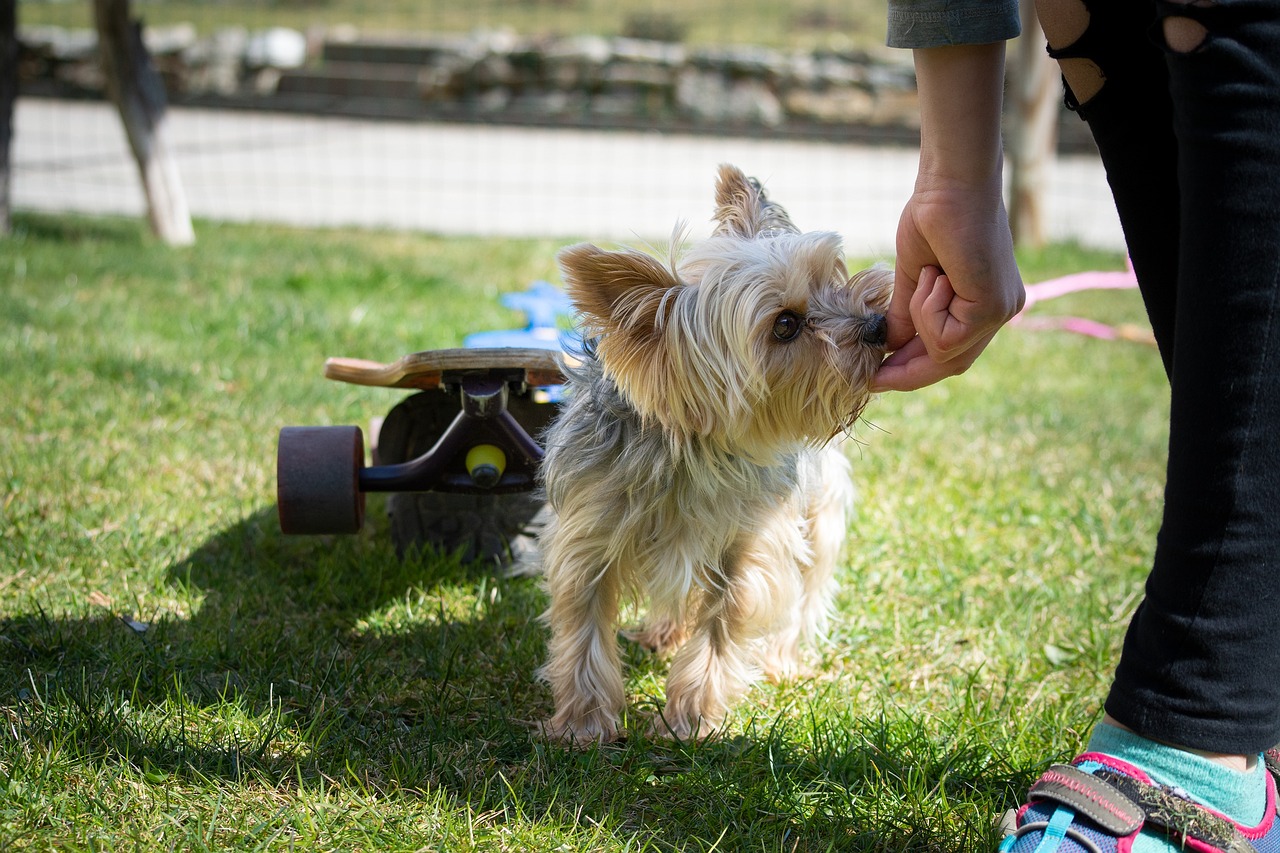
Impact on Family Dynamics
Having a dog in the household can significantly transform family dynamics in ways that go beyond mere companionship. Dogs are not just pets; they become integral members of the family, fostering a unique bond that enhances emotional connections among family members. Imagine a scenario where everyone gathers in the living room, and amidst laughter and chatter, your furry friend is wagging its tail, bringing joy and warmth to the atmosphere. This shared experience can create lasting memories and deepen relationships.
One of the most profound impacts of having a dog is the way it encourages teamwork. When a family decides to adopt a dog, everyone has a role to play in its care and training. From feeding and walking to grooming and playing, these responsibilities often lead to collaborative efforts that strengthen family ties. For instance, parents and children can work together to teach the dog basic commands or set up a training schedule. This shared responsibility not only teaches children about accountability but also fosters a sense of unity as everyone contributes to the well-being of their four-legged family member.
Moreover, dogs can serve as a catalyst for communication. They often become a topic of conversation, sparking discussions about their antics, training progress, or health needs. This can be particularly beneficial in families with teenagers, where communication can sometimes falter. The presence of a dog can bridge gaps, providing a common ground for family members to connect and engage with each other. It's not uncommon for family members to gather around to share stories or experiences related to their dog, creating a platform for open dialogue.
Furthermore, the emotional support that dogs provide can greatly enhance family dynamics. In times of stress or conflict, the unconditional love and loyalty of a dog can offer comfort and solace. Families often find themselves cuddling with their pet during tough times, which can help alleviate feelings of anxiety and promote a sense of security. The act of petting a dog has been shown to release oxytocin, the "love hormone," which can reduce stress levels and foster a calming environment within the home.
In essence, the presence of a dog can create a warm, nurturing environment that encourages bonding and communication among family members. As they navigate the joys and challenges of pet ownership together, families often find themselves growing closer, united by the love for their furry friend. Whether it's through shared responsibilities, increased communication, or the emotional support that dogs provide, the impact on family dynamics is profound and lasting.
- How does having a dog improve family relationships?
Dogs encourage teamwork and communication, creating shared responsibilities that can strengthen bonds among family members.
- Can a dog help with family stress?
Yes, the companionship of a dog can provide emotional support and reduce stress, fostering a calming environment at home.
- What roles do family members play in caring for a dog?
Family members can take on various roles such as feeding, walking, grooming, and training, promoting collaboration and responsibility.
Frequently Asked Questions
- How do dogs enhance home security?
Dogs have natural protective instincts that make them excellent guardians. Their keen senses allow them to detect intruders, and their loyalty drives them to protect their families. Whether it's barking at unusual sounds or physically standing guard, dogs can significantly increase the overall security of your home.
- What training is necessary for a dog to be a good watchdog?
Training your dog is essential for maximizing its security capabilities. Start with basic obedience commands like sit, stay, and come. Once your dog masters these commands, you can move on to advanced alert training, which teaches them to recognize and respond to unusual sounds or movements effectively.
- Are certain dog breeds better for home security?
Yes, some dog breeds are known for their protective instincts and trainability. Breeds like German Shepherds, Rottweilers, and Doberman Pinschers are often chosen for security purposes due to their natural guarding abilities. However, the right breed for you may also depend on your lifestyle and living situation.
- How does having a dog affect family dynamics?
Having a dog can significantly strengthen family bonds. When family members work together to train and care for their pet, it fosters teamwork and shared responsibility. This collaboration not only enhances the dog's security training but also creates a more secure and comforting environment at home.
- Can a dog help reduce anxiety and improve well-being?
Absolutely! Dogs provide emotional support and companionship that can alleviate anxiety. Their presence creates a sense of safety, making families feel more secure in their homes. This emotional reassurance is just as important as the physical security they provide.
- What role does socialization play in a dog's security training?
Socialization is crucial for a dog's development and security training. Exposing your dog to various environments, people, and situations helps prevent fear-based aggression. A well-socialized dog is more confident and better equipped to handle potential threats, making it a more effective protector.



















